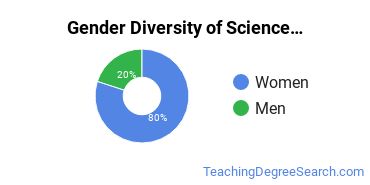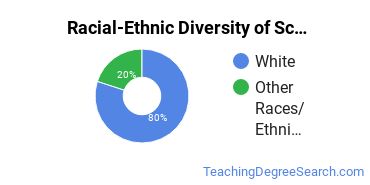Science Education at SUNY Fredonia
If you are interested in studying science education, you may want to check out the program at SUNY Fredonia. The following information will help you decide if it is a good fit for you.SUNY Fredonia is located in Fredonia, New York and has a total student population of 4,055.
Want to know more about the career opportunities in this field? Check out the Careers in Science Education section at the bottom of this page.
SUNY Fredonia Science Education Degrees Available
- Master’s Degree in Physical Science Education
SUNY Fredonia Science Education Rankings
Physical Science Education Student Demographics at SUNY Fredonia
Take a look at the following statistics related to the make-up of the physical science education majors at SUNY Fredonia.
SUNY Fredonia Science Education Master’s Program

The following table and chart show the race/ethnicity for students who recently graduated from SUNY Fredonia with a master's in physical science education.

| Race/Ethnicity | Number of Students |
|---|---|
| Asian | 0 |
| Black or African American | 0 |
| Hispanic or Latino | 0 |
| White | 1 |
| International Students | 0 |
| Other Races/Ethnicities | 0 |
Related Majors
- English & Language Arts Education
- Spanish Education
- Biology Education
- Earth Science Teacher Education
- Reading Teacher Education
Careers That Physical Science Education Grads May Go Into
A degree in physical science education can lead to the following careers. Since job numbers and average salaries can vary by geographic location, we have only included the numbers for NY, the home state for SUNY Fredonia.
| Occupation | Jobs in NY | Average Salary in NY |
|---|---|---|
| High School Teachers | 74,830 | $85,300 |
| Middle School Teachers | 39,950 | $83,490 |
| Education Professors | 5,590 | $88,580 |
| Biological Science Professors | 4,590 | $102,800 |
| Chemistry Professors | 2,270 | $102,260 |
References
*The racial-ethnic minorities count is calculated by taking the total number of students and subtracting white students, international students, and students whose race/ethnicity was unknown. This number is then divided by the total number of students at the school to obtain the racial-ethnic minorities percentage.
More about our data sources and methodologies.
